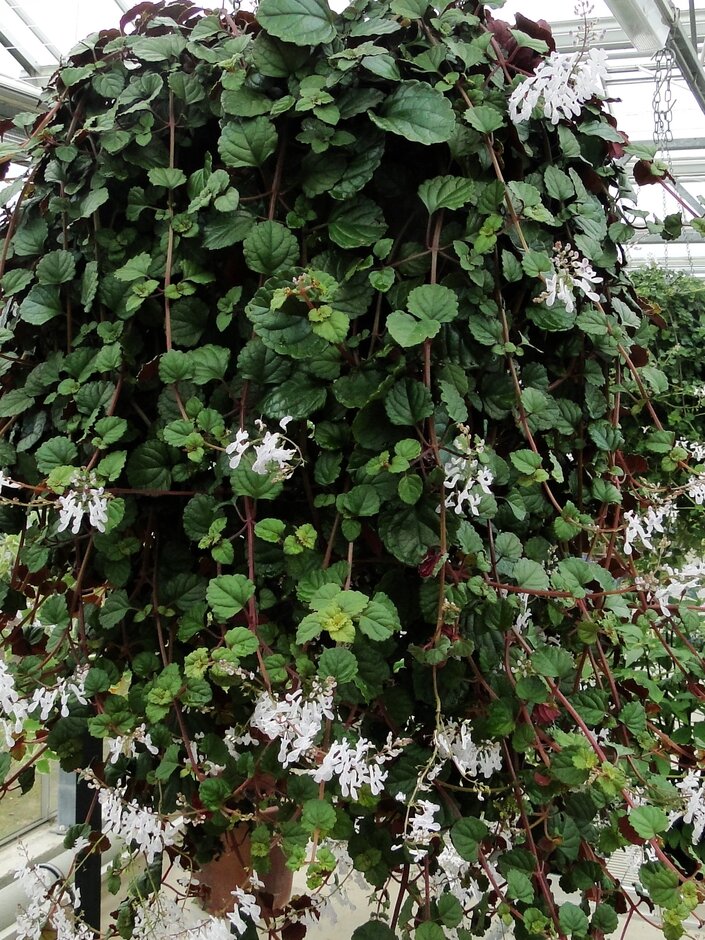Size
Ultimate height
Up to 10cmTime to ultimate height
1–2 yearsUltimate spread
0.5–1 metresGrowing conditions
Moisture
Moist but well–drained, Well–drainedpH
Acid, Alkaline, NeutralColour & scent
| Stem | Flower | Foliage | Fruit | |
| Spring | Green Red | |||
|---|---|---|---|---|
| Summer | Green Red | |||
| Autumn | Green Red | |||
| Winter | Green Red |
Position
- Partial shade
Aspect
South–facing or East–facing or West–facing
Exposure
Sheltered Hardiness
H2Botanical details
- Family
- Lamiaceae
- Native to GB / Ireland
- No
- Foliage
- Evergreen
- Habit
- Matforming, Trailing
- Genus
Plectranthus can be annuals, evergreen perennials or shrubs, with opposite, ovate or heart-shaped, sometimes fleshy leaves, and 2-lipped, tubular flowers borne in whorls forming spikes or panicles
- Name status
Accepted
How to grow
Cultivation
Best grown in a well-drained soil in partial shade, used as foliage plant either in beds or in a container. Can be grown under glass but shade from hot sun
Propagation
Propagate by seed at 19-24°C (19-24°F) when ripe or propagate by stem-tip cuttings at any time of year (see softwood cuttings)
Suggested planting locations and garden types
- Patio and container plants
Pruning
Prune young plants to create bushy growth
Pests
Generally pest-free
Diseases
Generally disease-free
Get involved
The RHS is the UK’s gardening charity, helping people and plants to grow - nurturing a healthier, happier world, one person and one plant at a time.
